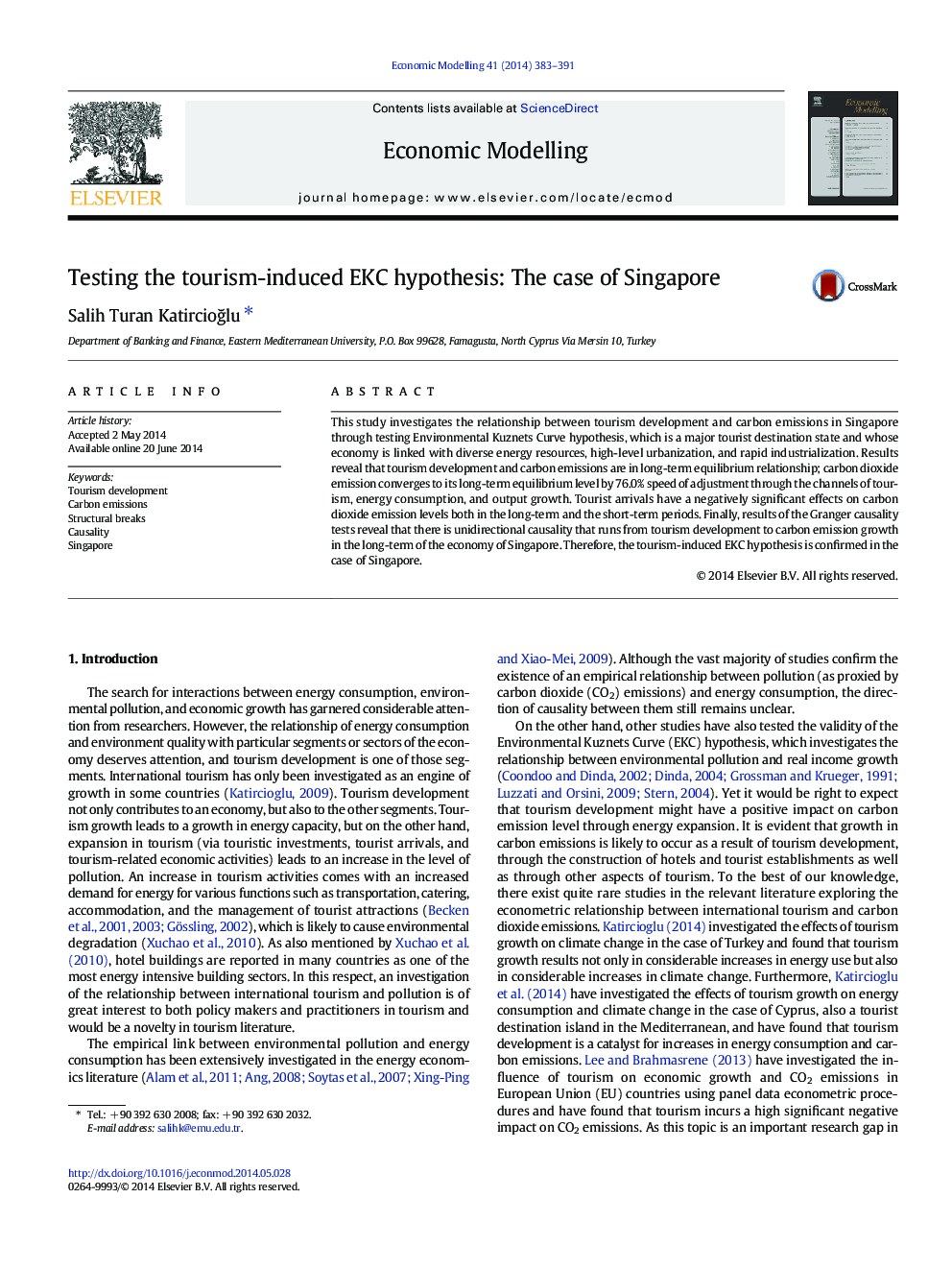| Article ID | Journal | Published Year | Pages | File Type |
|---|---|---|---|---|
| 5054150 | Economic Modelling | 2014 | 9 Pages |
Abstract
This study investigates the relationship between tourism development and carbon emissions in Singapore through testing Environmental Kuznets Curve hypothesis, which is a major tourist destination state and whose economy is linked with diverse energy resources, high-level urbanization, and rapid industrialization. Results reveal that tourism development and carbon emissions are in long-term equilibrium relationship; carbon dioxide emission converges to its long-term equilibrium level by 76.0% speed of adjustment through the channels of tourism, energy consumption, and output growth. Tourist arrivals have a negatively significant effects on carbon dioxide emission levels both in the long-term and the short-term periods. Finally, results of the Granger causality tests reveal that there is unidirectional causality that runs from tourism development to carbon emission growth in the long-term of the economy of Singapore. Therefore, the tourism-induced EKC hypothesis is confirmed in the case of Singapore.
Related Topics
Social Sciences and Humanities
Economics, Econometrics and Finance
Economics and Econometrics
Authors
Salih Turan KatircioÄlu,
